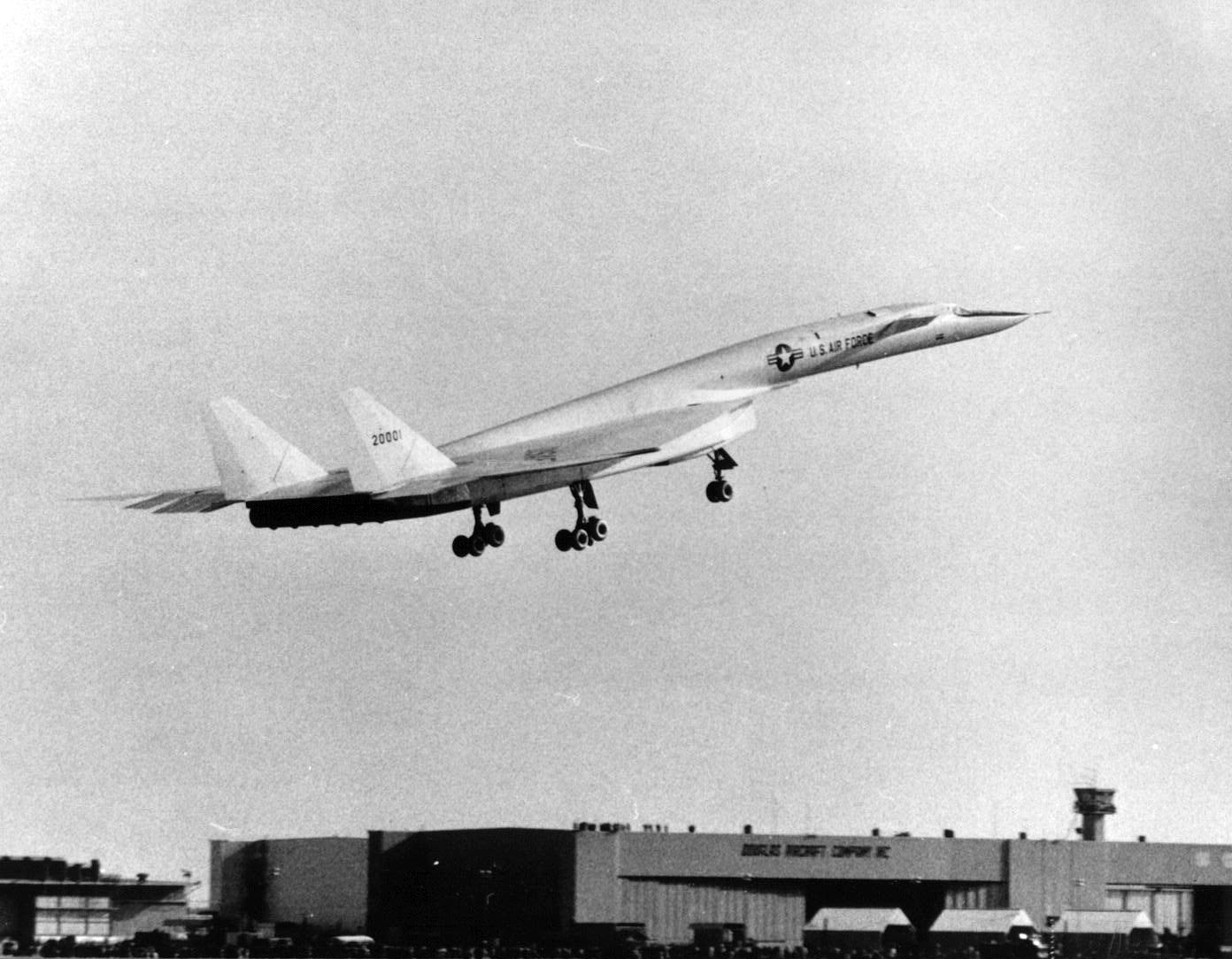
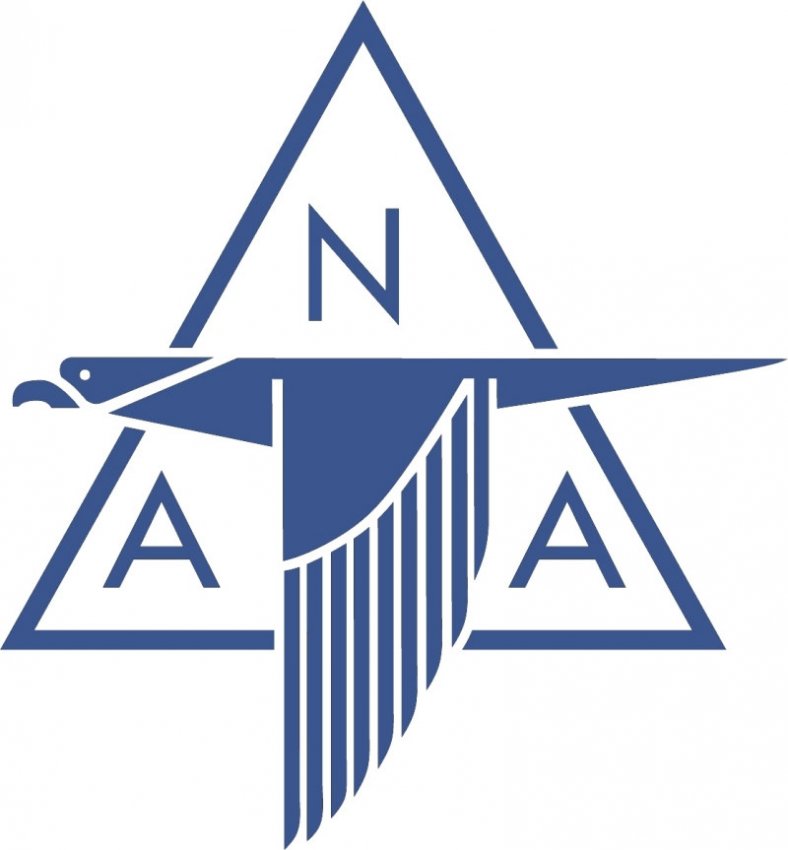
Originally a prototype Mach 3 strategic bomber, 62-0001 (also known as AV-1) and it’s sister ship, XB-70A-2-NA, 62-0207, (AV-2), were built and used by the Air Force and NASA as high-speed research aircraft. The third Valkyrie, XB-70B-NA 62-0208 (AV-3), was never completed.
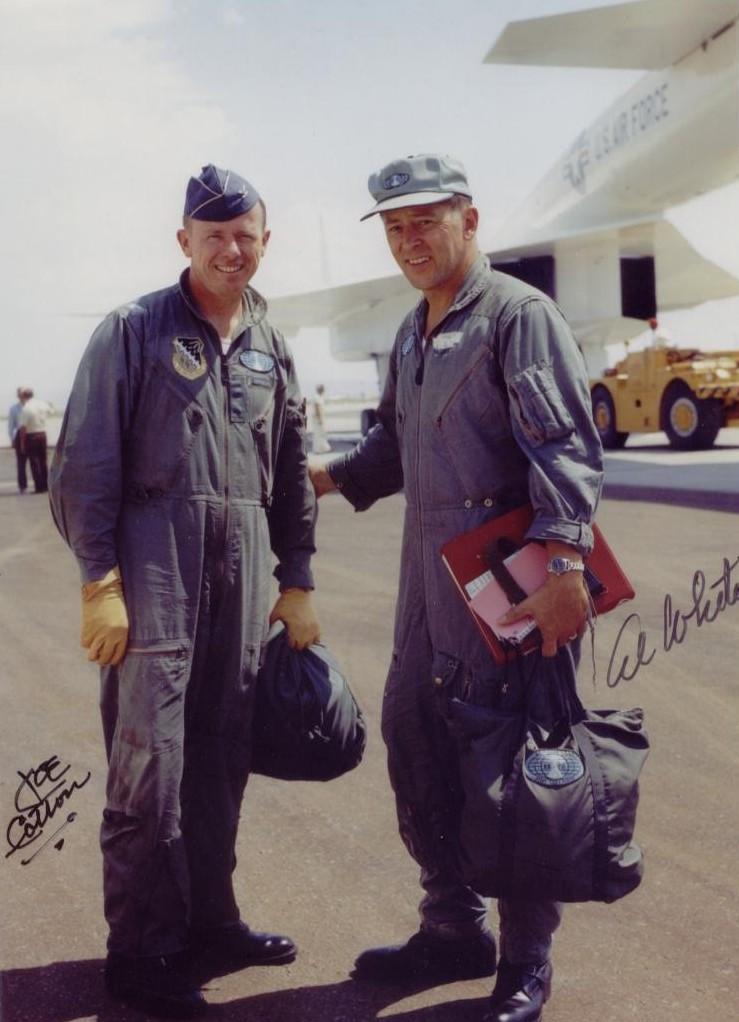
62-0001 was the first of three prototype Mach 3+ strategic bombers. (The third prototype, XB-70B 62-0208, was not completed.) The Valkyrie utilized the most advanced technology available. Materials and manufacturing techniques had to be developed specifically to build this airplane. It is a large delta wing airplane with a forward canard and two vertical fins. The outer 20 feet (6.096 meters) of each wing could be lowered to a 25° or 65° angle for high speed flight. Although this did provide additional directional stability, it actually helped increase the compression lift, which supported up to 35% of the airplane’s weight in flight.
The XB-70A is 185 feet, 10 inches (56.642 meters) long with a wingspan of 105 feet (32.004 meters) and overall height of 30 feet, 9 inches (9.373 meters). The delta wing had 0° angle of incidence and 0° dihedral. (The second XB-70A had 5° dihedral.) The wing has 3.0° negative twist. At 25% chord, the wing has 58.0° sweepback. Total wing area is 6,297 square feet (585 square meters). The Valkyrie has a empty weight of 231,215 pounds (104,877 kilograms), and maximum takeoff weight (MTOW) of 521,056 pounds (2236,347 kilograms).

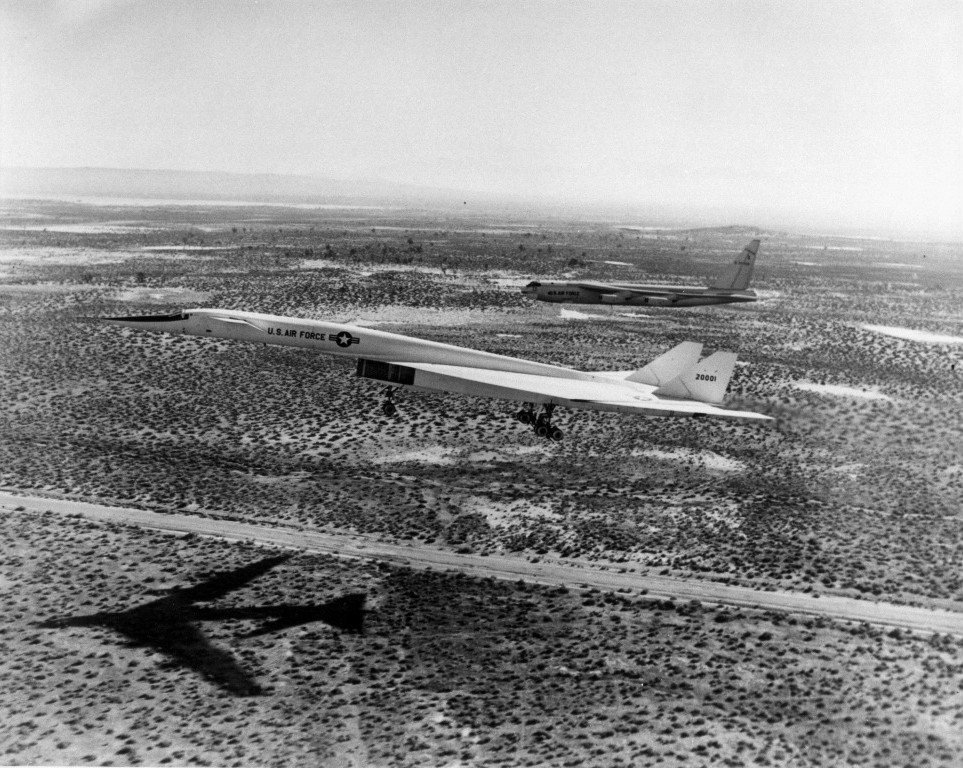
The maximum speed achieved was Mach 3.08 (1,787 knots/2,056 miles per hour, or 3,309 kilometers per hour) at 73,000 feet (22,250 meters), 12 April 1966. Its mission maximum speed is 1,721 knots (1,980 miles per hour/3,187 kilometers per hour) at 79,050 feet (29,094 meters). The XB-70A has a rate of climb of 33,000 feet per minute (168 meters per second). The service ceiling is 79,000 feet (24,079 meters).
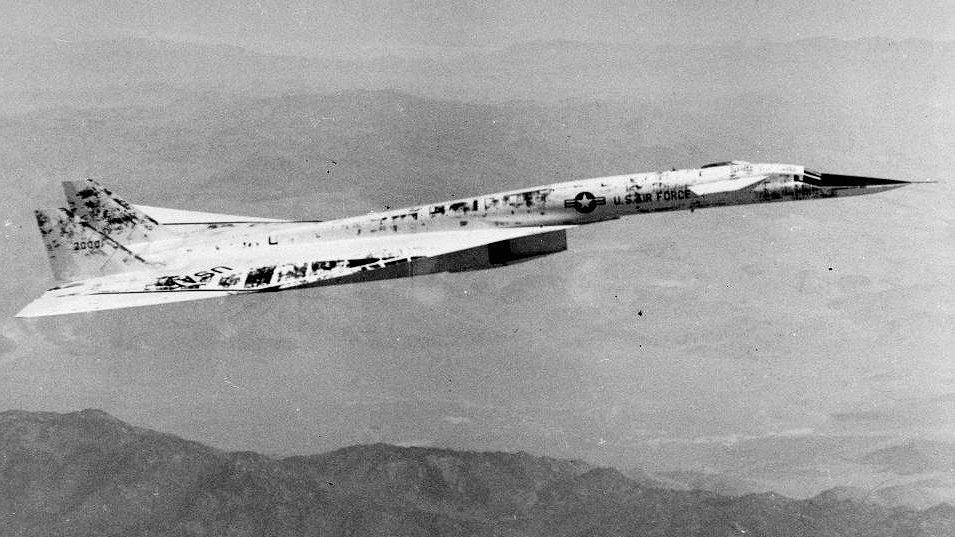
The Valkyrie has a maximum fuel capacity of 43,646 gallons (165,218 liters) JP-5 or JP-6, carried in 11 tanks throughout the fuselage and wings. It also carries 42.4 gallons (161 liters) of engine oil. The maximum range is 2,969 nautical miles (3,417 statute miles/5,499 kilometers).
North American Aviation XB-70A Valkyrie 62-0001 made 83 flights with a total of 160 hours, 16 minutes flight time. 62-0001 is on display at the National Museum of the United States Air Force, Wright-Patterson Air Force Base, Ohio.
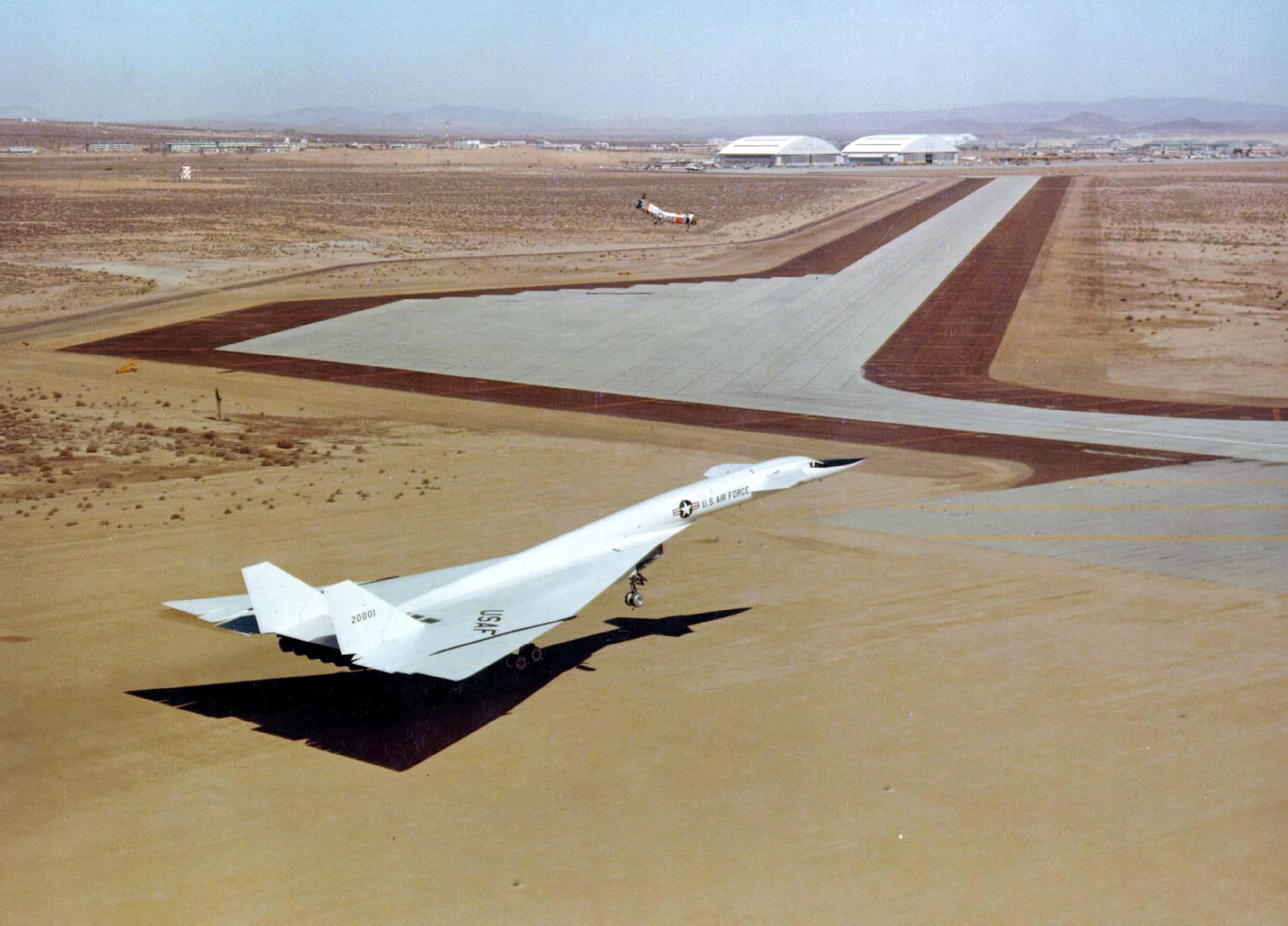
© 2024, Bryan R. Swopes
The outer wing panels could be lowered as much as 60° to increase longitudinal stability and also to increase Lift by “surfing” on the shock wave in high speed flight.
The sister ship 62-0207 was later lost in a catastrophic inflight collision involvins one of the chase plane (a F104G) during a publicity photo shoot for shareholders of the General Electric Company
Some of my best “AF BRAT” years were at Edwards (and I had many!) Coinciding with my “Elementary” and “HS” days (62-67′) we enjoyed seeing these things (fighters/ bombers/ X planes) flying around us. And because Edwards is actually a really small community, it was no coincidence that our classmates were children of these famous flyers (like Joe Cotton and Chuck Yeager and so many others). Chris Cotton! My old (Junior HS buddy) If you are out there, give me a jingle!
Dear Mr Swopes.
I cannot find a direct contact. I apologize for writing here, and urge you to remove/move this comment as you see fit.
You had an article (November 24, 2021) on Jerome Boyle. I found your page because I read his book many years ago and found it one of the best reads I had come across.
I have heard that perhaps he was once working on more books, though his passing would have ended such a project. I wanted to reach out to someone about if there will ever perhaps be a web achieve of his unfinished works. It may be that there isn’t much profit in finishing and publishing them, though if that was to happen I would gladly buy a copy. As your article is written as a person who knew him, perhaps you are the best person to ask about that. His book was a very fine thing, and the steam table incident had me in stitches. I’d had to see whatever else he wrote forgotten in a folder in the back of an office somewhere.
Thank you,
Jerry never finished his books. He had planned “Apache Noon” and “Apache Sunset,” but sadly, they never happened. Jerry was a good friend, but I for one, don’t know enough about his wartime experiences to take up where he left off.
Oh, I wouldn’t imagine that anyone could fill in the gaps he left. Rather I’d like to see access made available to the unfinished works, in whatever condition they happen to be in.
Maybe there’s nothing but an outline, or a few notes… but if there’s say, six or ten chapters in a filing cabinet or hard drive somewhere, I for one would like to read them. I doubt there’s money in it getting published, but I hate to think of it just being lost.
If that’s impossible, so be it. Knew it was a long shot when I started searching…. but nothing ventured, nothing gained.
As a 60’s kid, I had a plastic model of the XB-70. In my opinion it was the most beautiful and futuristic of all planes of that era. Don’t know if it would have ever been useful, but it looked gorgeous.
Marot Eric was right 4 years ago: Wingtips down not only improved longitudinal stability, but also L/D-Ratio (in german: “Gleitzahl”) AND helped countering the CG-movement .
L/D decreases with speed, and there are some additional “quirks” in the supersonic speedrange, too.
e.g., a modern widebody-airliner has a L/D of ~18 to 20 @ cruise speed. A standard 18-meter-class glider has a L/D of ~50 @ ~ 70kn, and the current top unlimited-class glider, the Nim-Eta has a L/D of 70 (!!) @ 60kn.
The XB-70 @ Mach 3.0 with the Wingtips all up has almost the same L/D of 7 like the Concorde @ Mach 2.0. BUT: With the Wingtips @ 65° it has a ~40% improvement! Also CG shifts back to roughly normal (meaning CG at subsonic speeds).
The Effect was induced by the outer sides (cheeks) of the engine-inlets, they pushed the air (quite violently!) sideways underneath the huge wing, where that shockwave was then reflected downwards – hence the name! A side-effect of that quite violent cross-flow was heat – the underside of Valkyries wings heated up to over 500°C! (No wonder she needed JP-6 fuel to not blow up midair)
And another two little things: On her maiden flight Valkyrie was the heaviest aircraft to ever grace the skies, and at full speed she needed all of Nevada (!) to turn around. 😉
Even after all these years, that beautiful airplane still looks like something from the future instead of something from 60 years ago. Seeing it at the Air Force museum is truly an awesome experience. Don’t pass up the chance to visit that museum if the opportunity presents itself.